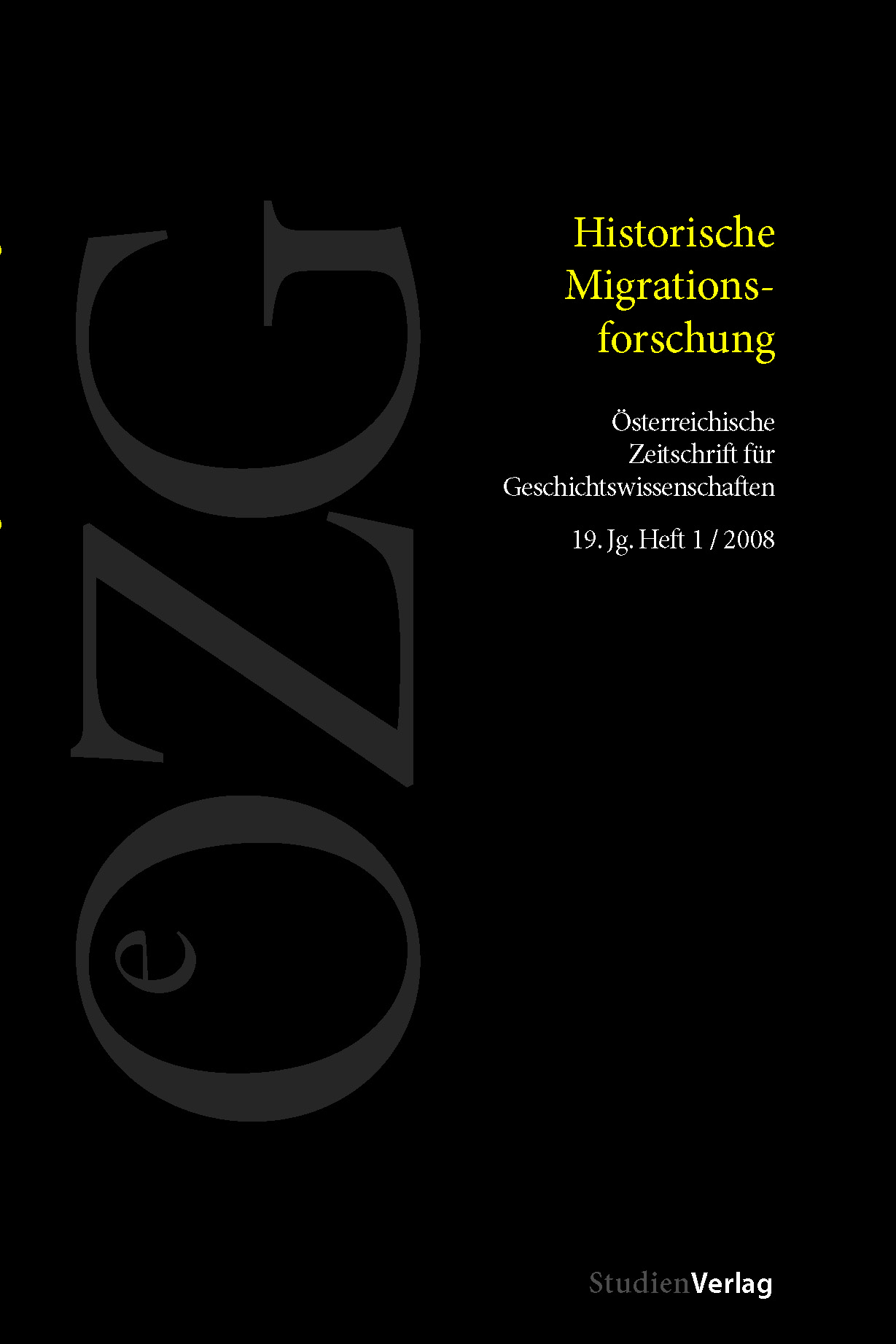Ein ewiges Hin und Her. Kontinentale, transatlantische und lokale Migrationsrouten in der Spätphase der Habsburgermonarchie
DOI:
https://doi.org/10.25365/oezg-2008-19-1-3Abstract
According to new perspectives in migration history, spatial mobility was never a linear phenomenon restricted to a single move from an area of out-migration to an area of in-migration. Instead, as it will be argued here, migration in Central Europe was a ›multidirectional phenomenon‹. Based on various statistics on internal, continental, and transatlantic migration, the interwoven patterns of coming and going have been analyzed for Austro-Hungary in the late nineteenth and early twentieth century. First, the importance of coming and going for city growth and its connections among rural areas are shown. Second, as an example for labor migration of Poles from Western Galicia indicates, inhabitants of the Habsburg Monarchy could choose between different routes to migrate. The third example that deals with trans- atlantic migration poses the question of how useful terms such as ›emigration‹ and ›immigration‹ are in the context of a return rate of nearly 40 percent of transatlantic migrants.


